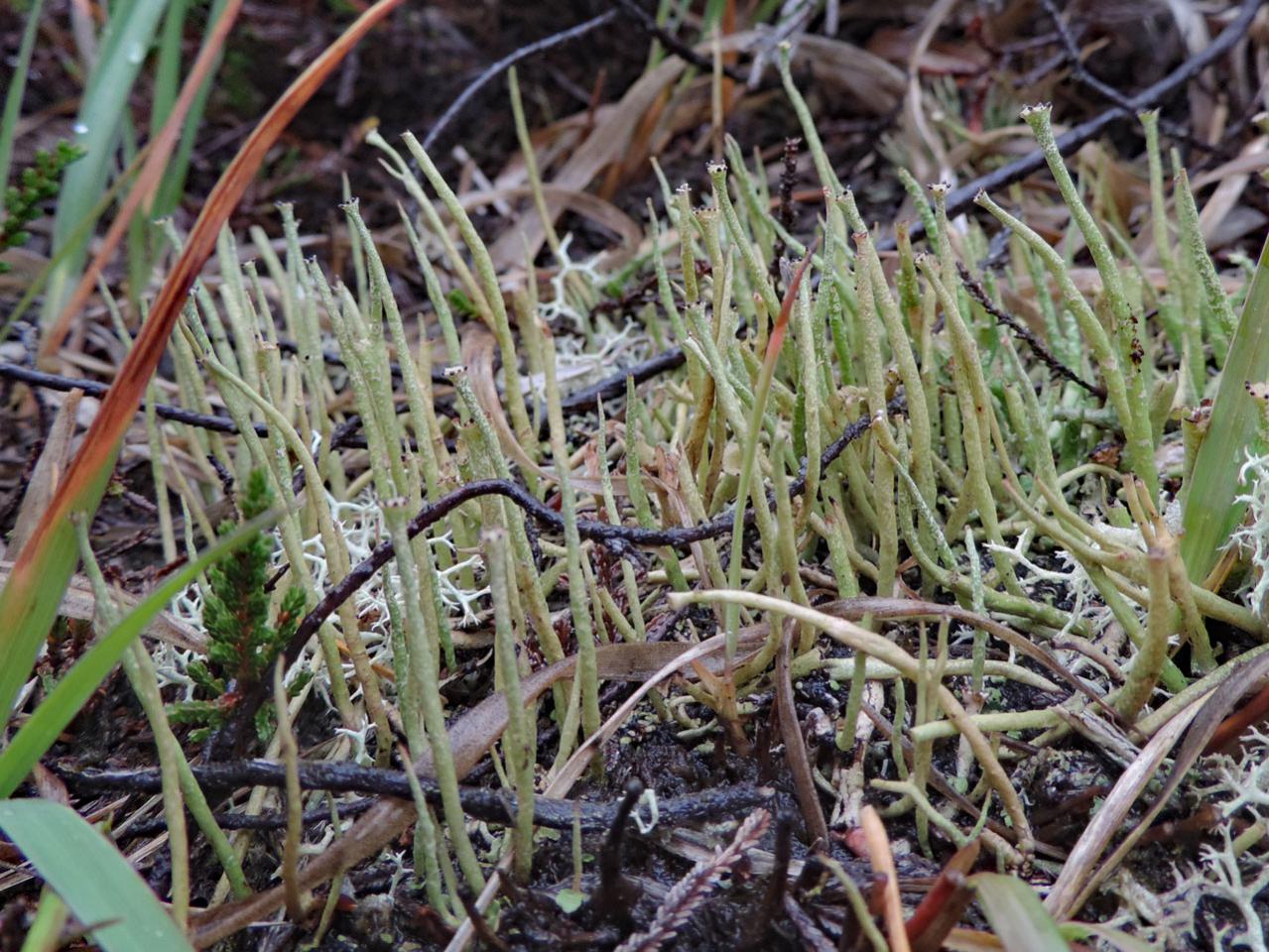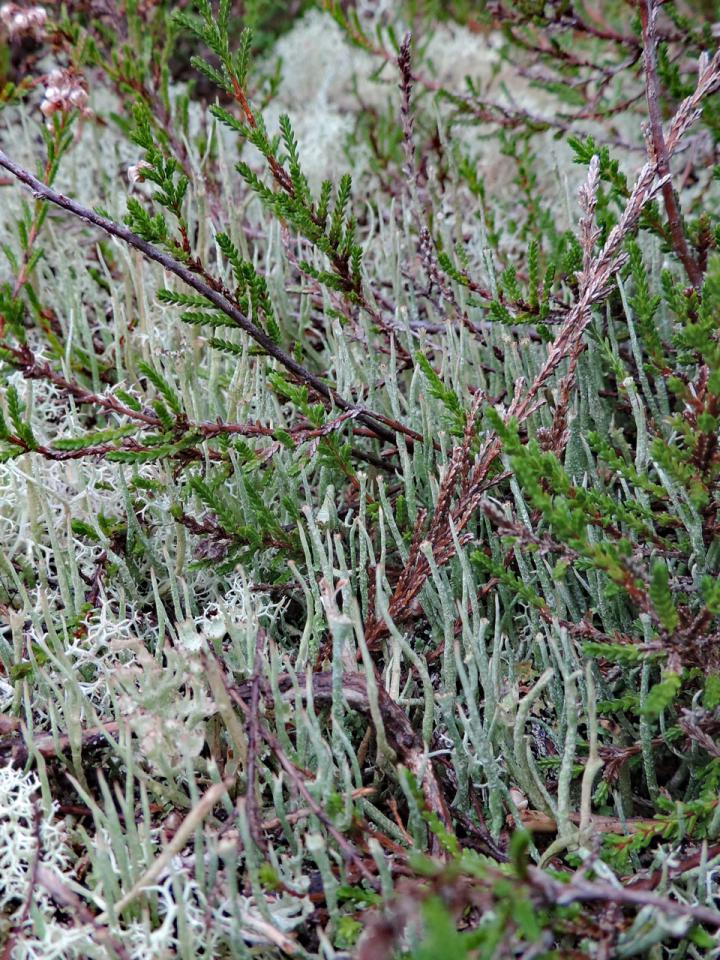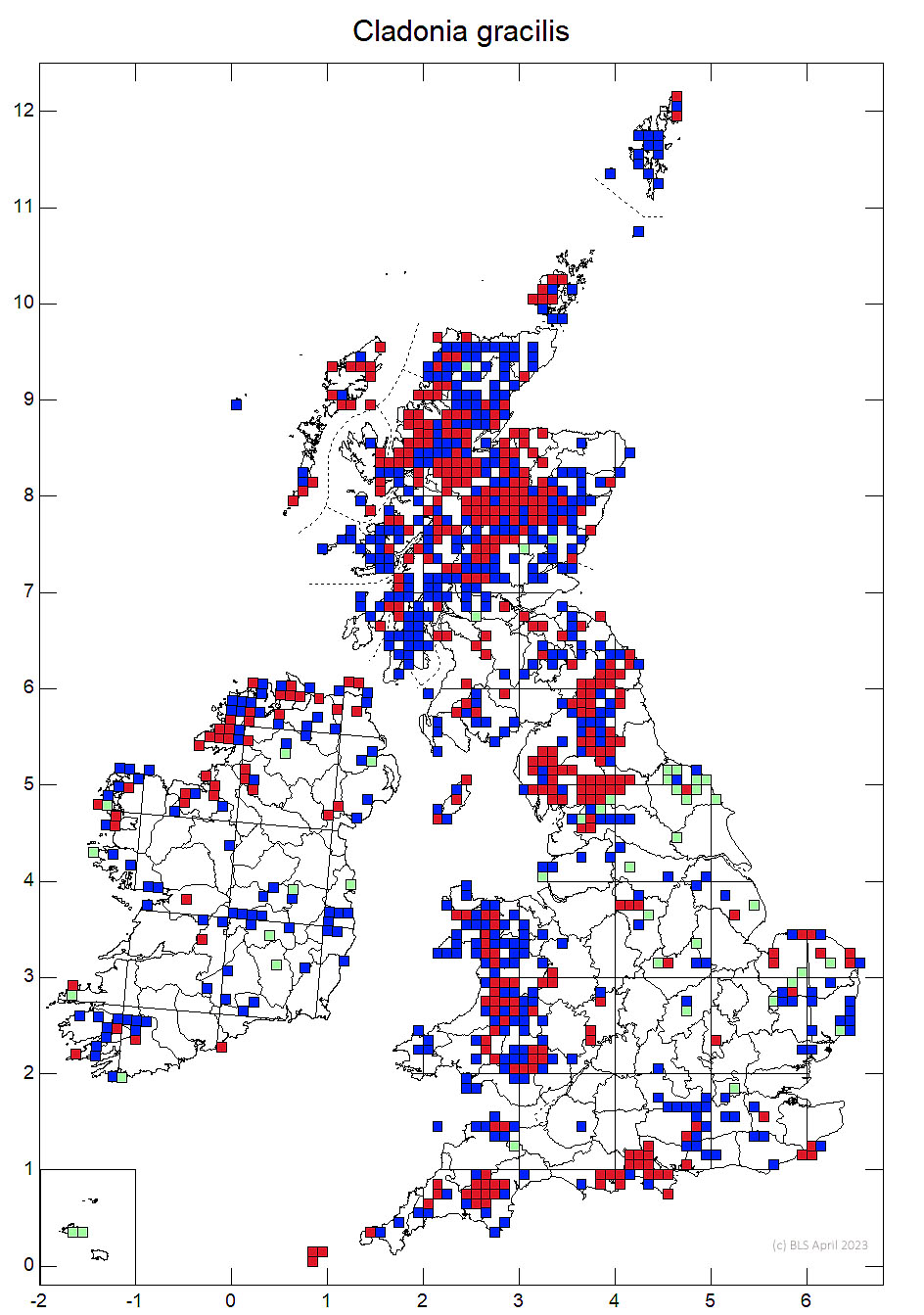Cladonia gracilis
A tall elegant Heathtail Cladonia, with straight largely unbranched poditia, which, when mature, end in small regular cups which are not perforate. Ranges from dark brown to pale grey. In drier heathland and moorland habitats and dunes and rarely on lignum. Frequent in the uplands but Rather scare and declining in the lowlands where it is characteristic of high quality lichen rich habitats.
Podetia 1–6 cm tall, slender, 0.5–1.5 mm diam., greenish grey or often olive to dark brown, often becoming dark brown-black towards the base, unbranched or sparingly branched, pointed at apices or usually some with a terminal, ± regular, shallow cups 1–2 mm in diam., not perforate, often with dentate margins, sometimes proliferating from the rim; surface smooth, corticate, usually conspicuously but finely areolate (×20 lens), attached squamules usually absent or scarce. Basal squamules to 2 mm, indented, mostly disappearing. Apothecia and pycnidia dark brown, at apices of podetia; apothecia rather rare; pycnidia frequent. Thallus C–, K–, KC–, Pd+ red, UV– (fumarprotocetraric acid).
Characterised by the slender habit and clustered, smooth, mostly unbranched, erect podetia, some of which are either pointed or terminate in small, non-perforate cups. Cladonia furcata lacks cups and has perforate branch axils; C. cornuta has a similar habit but podetia have a sorediate upper half and smooth, corticate lower part; C. crispata var. cetrariiformis has perforate cups, is more branched and is Pd–, UV+ white (squamatic acid). See also C. maxima and C. trassii.
On sandy or acid soil, amongst rocks and more rarely on rotting wood, in heathlands, dunes and in montane situations; frequent in the uplands, local in the lowlands.

Throughout Britain and Ireland, commoner in the north and west. More localised in the lowlands and characteristic of high quality sites there.
The map data suggests this lichen is declining in the lowlands. Habitat loss and vegetation over growth resulting for a decline in the intensity of management are likely to be significant factors.
Pino-Bodas, R., Sanderson, N., Cannon, P., Aptroot, A., Coppins, B., Orange, A. & Simkin, J. (2021). Lecanorales: Cladoniaceae, including the genera Cladonia, Pilophorus and Pycnothelia. Revisions of British and Irish Lichens 19: 1-45. Link




